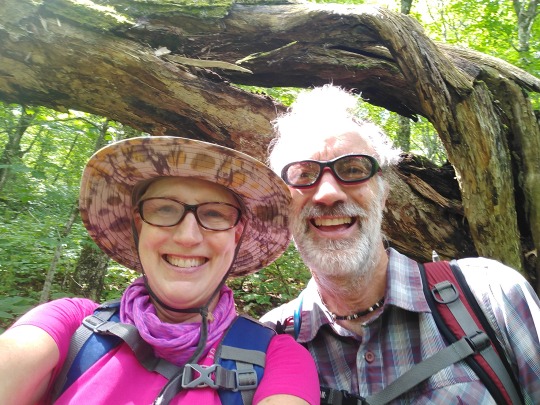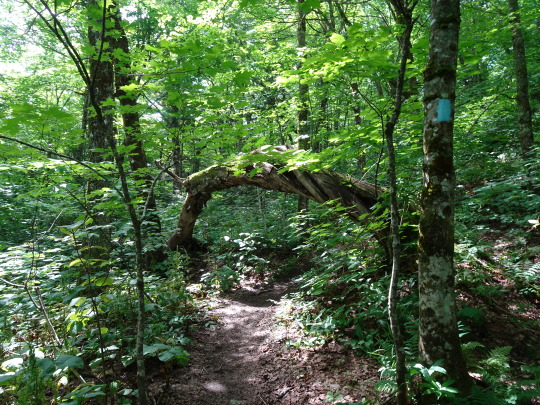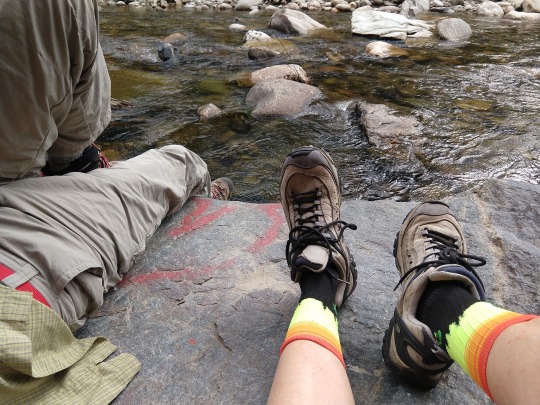I thought I’d take a step back and explain why we are suddenly blogging from Vermont instead of Mexico.
Our Vermont History
Friends who knew us when we lived in Mamaroneck, NY (1998-2008) know that during that time, we bought a couple of vacation rental houses in Vermont. We wanted a rural place to escape from the hustle bustle of the NY metro area, and we loved New England, where I lived for much of my childhood.
VT House #1: The Lake House
The first house we bought was meant to be our retirement home, and we nicknamed it “The Lake House.”
It’s a six-bedroom chalet nestled on a wooded three-quarters of an acre across the street from 200-acre Lake Rescue, where we keep a dock with boats. The kids and I would escape for half of every summer to decompress in the Green Mountains, go swimming and boating, hike nearby trails, sit around a fire pit making s’mores and singing camp songs, gaze at stars and explore Vermont.
We had a Zodiac boat with a motor that we used to go tubing. We also had two kayaks, a rowboat and a someone sailboat. Bob came up for vacation a couple of weeks each summer, and otherwise took Amtrak from NY every Friday for a weekend visit. During the winter, we came up on occasional weekends and some school breaks to ski nearby Okemo. I would XC ski on Lake Rescue.
 |
| The dock and boats at the Lake House |
As soon as the contract was signed on the Lake House, we found ourselves in the vacation rental business, because it came with winter seasonal renters, and that was our plan for paying for it.
VT House #2: The Brook House
We bought the second house, which we call “The Brook House,” a couple of years later because the real estate market was booming, and it seemed like a good investment. The Brook House is a 120-year-old, five-bedroom former chicken coop that backs to a creek and Tiny Pond Recreation Area, 400 acres of state forest that no one seems to know exists. Echo Lake is less than a quarter-mile away. The yard is big and there’s a little country store across the street.
 |
| The Tyson Store, across the street |
We also dubbed it, tongue in cheek, “The College Fund.” Alas, that real estate
“boom” turned out to be a bubble when the market tanked. The region is only now
recovering, so we still own both houses, though the Brook is on the market. One
rental home is quite enough to manage from a distance!
 |
| The creek out back |
Two Houses Filled With Love
The houses, especially The Lake House, are an integral part of our family story, especially since we moved to Colorado in the middle of the kids’ childhoods, so this region served as an anchor for their lives. We filled the houses with people we loved whenever we could. Family – grandpa and grandmas, aunts and uncles, siblings and cousins – and friends came up to the lake for summer vacations, year after year, creating so many dear memories.
 |
| Welcome to the Lake House |
 |
| Kayaking on the Black River with Aryk |
Our friend Marie Laguerre brought her twins Omar and Kayla to attend Farm & Wilderness Barn Day Camp (eight miles up the road, and extraordinary) with my kids, and lived in the house for two weeks with us. I remember Omie would eat nothing but ramen noodles. Marya and Mickey Carter did the same with kids Spencer the bed at the Brook House (and I was so proud of myself for adding plastic covers to the mattresses that summer before their arrival), is now a brilliant athlete attending Harvard!
Cousin Jeanine Troisi came and learned to ski one year; another summer she ran a hilly 5K race along Echo Lake not long after giving up smoking. I was so proud of her! My brother Mike, sister-in-law Paula and their three kids visited; we rode bikes together around the lake with the smallest kids in kiddie seats. My nephew Jake and I kayaked into the middle of the lake to watch the Perseids Meteor Shower. Our friend Valerie Rasmussen, who has since passed away, came to hike and waterfall jump one summer, and to ski one winter.
My dear friends Mary and Sam Wiley brought live lobsters from Newport, RI, and we watched lawbstah races on the front deck of the Lake House before enjoying scrumptious steamed lobsters. I think of her whenever I see those lobster pots, which we still have, just waiting for her next visit. Mary came back another year and used the Brook House as a base while visiting colleges with her son Henry. Or was it Frank? I remember Lex’s stuffed lamb Buggeeya Guy disappeared during that visit, somewhere between going to car to leave for the Killington Adventure Zone to enjoy the alpine slide and arriving at the mountain. Forever a mystery.
 |
| Hiking at Echo Lake |
 |
| View from the top |
My cousin Loraine Carapellucci and husband Dave Handley brought their three daughters for a week, and our kids really bonded. I remember we had a merry time on the rope swing of Discovery Island, in the middle of Lake Rescue, giving kids Olympic scores for “poses” before they dropped into the water. Alas, that swing is gone now; the tree from which it hung was brought down in the Great Flood of 2012.
We even hosted a Dominican-American girl from the Bronx named Clarissa Delgado through the Fresh Air Fund, to give her her first nature experience. I remember watching stars with Clarissa, a phenomenal sight for a girl accustomed to bright street lights and no view of the starry sky, and teaching her how to fish. In fact, it seems I spent countless summer hours putting worms on hooks and extricating fish from the same hooks over and over as I taught countless munchkins how to fish off the dock. I failed hopelessly to learn to fly fish, however, despite efforts summer after summer from my friend Eddie Eagan, who was director of the local Chamber of Commerce and
taught flyfishing on the side.
I loved running around the lakes, and often woke up early to kayak on the misty lake, alone on 200 acres of calm water save for a couple of loons.
 |
| Misty morning, Lake Rescue |
So many thousands of wonderful memories! When we moved to Colorado in early 2009, we were saddened to realize our Vermont summers were abruptly over. We took a financial hit from the recession that took years to recover from, and couldn’t afford to fly the family across the country. So the houses became vacation rental businesses that I managed from afar, and Bob and I would go back every couple of years to make improvements and do work on them.
We sort of forgot that the Lake House was originally supposed to be a home.
Reconnecting with Vermont
But this past November, we went up and stayed in the Brook House for five weeks after Bob retired. We took Bob’s mom and sister Beth, and it snowed a good two or three feet during our stay. Bob and I spent an hour every morning in the hot tub on the back deck sipping mimosas and enjoying the sound of the creek while snowflakes gently played with our hair and ice from 13-degree mornings formed little spikes on his beard. My brother Phil, wife Rose and son Philip came for Thanksgiving, and 2.0 (pronounced 2-point-oh, as we like to call Philip the 2nd) sat in the same highchair my kids had sat in as he dropped his pieces of stuffing on the rug. My niece Catherine and her daughter Audrey also came for a few days, and Aud built a snowman in the yard.
 |
| Audrey and Cat build a snowman |
And suddenly we remembered that these weren’t just vacation rentals. They were our homes! And even though we had left Colorado behind for the traveling life and sort of felt homeless, we weren’t!
Part-Time VT Residents
Aryk loved Vermont so much that this summer, they took a job as a counselor at Farm and Wilderness Camp, which they attended for eight summers before we moved to Colorado. Lex loved it so much that they chose to go to college at Champlain College in Burlington, VT.
So we have decided that we will live in Vermont during the summers. The houses give our kids a place to come to from college that feels like home. They can get summer jobs. They can visit their favorite ice cream place (the Ludlow Coffee Company, formerly Scoops) and eat at their favorite pizza joint (Goodman’s American Pie). They can feel anchored.
 |
Another favorite ice cream place, Seward’s in Rutland.
I always order the Bittersweet Symphony!
Lex loves the Panda Paws. |
We are working hard, though. Because we are trying to sell the Brook House, Bob and I are spending long hours making improvements – painting the house and some doors, pulling up a rug and refinishing a floor, planting grass and landscaping, buying furniture, and hiring and overseeing workmen. But we’re also going for long bike rides on scenic Route 100, a refreshing opportunity after the challenge of riding in Mexico. We’re hiking the Long/Appalachian Trail, enjoying our favorite ice cream places, trying to visit
every bar in the Okemo Valley. We’re running and doing yoga and lifting weights, and hanging out on the Tyson Store chatting with neighbors.
 |
| Hiking the Appalachian Trail |
Come October, we will head back south of the border and explore Mexico for the next 9 months. But when Lex gets done with their first year at Champlain College in May, we’ll return to the Green Mountain State and move back into the Lake House for the summer. (Hopefully, the Brook House will be sold and college paid for with the proceeds!)
I relish the opportunity to enjoy the region and explore the Green Mountain State more, without the burden of juggling full-time work, as I did when my kids were young. I look forward to connecting to the community and making friends. And I urge our family and friends to come visit! Because the Lake House has, in fact, turned into our summer retirement home. And we want to build more memories!
(In fact, my sorority sister Eileen Armelin, sister Julie and brother-in-law Mark, hopefully with Audrey and Cat; possibly Marie again with husband Joe; and family friends Julles Marquez and Ian Miller are coming to visit soon, so we’re already starting!)

















































